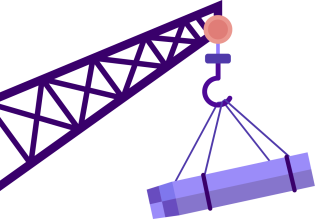Cost Effective Field Service Strategy: 7 Practical Ways to Reduce Costs

Being a service manager in the field service business is no easy task – you’re the conductor of a symphony, orchestrating multiple moving parts to ensure everything runs like a well-oiled machine. From managing a team of skilled technicians to handling customer inquiries and scheduling jobs, your plate is always full. In this dynamic and demanding environment, finding effective ways to reduce costs without sacrificing service quality is not just an aspiration; it’s a necessity.
Cost reduction isn’t about cutting corners or compromising on the quality of service you provide. Instead, it’s about optimizing your resources, eliminating inefficiencies, and making strategic decisions that lead to better outcomes. By implementing cost-effective strategies, you can improve your business’s overall profitability and enhance efficiency, giving you a competitive edge in the field service industry.
One of the first steps in achieving cost reduction is identifying the areas where expenses can be trimmed without negatively impacting service delivery. For instance, analyzing your labor costs can help you identify opportunities to optimize workforce scheduling, improve technician utilization, and reduce overtime expenses. Investing in training and upskilling your technicians can also lead to more efficient service delivery, reducing the need for revisits and maximizing the value your team brings to each job.
Vehicle expenses are another significant cost area that deserves attention. Regular maintenance and monitoring fuel consumption can lead to fuel savings and extend the life of your vehicles. Additionally, adopting fuel-efficient vehicles or exploring alternative transportation methods can have a positive impact on your bottom line.
Opportunity costs are often overlooked but can be substantial in the field service business. Every moment your technicians spend on low-priority tasks or traveling inefficiently between jobs represents a lost opportunity to attend to more profitable tasks or serve additional customers. Optimizing your technician scheduling and routing can significantly reduce these opportunity costs, making your operations more efficient and profitable.
Another essential aspect of cost reduction is leveraging technology to streamline your operations. Embracing digital tools, such as field service management software, can revolutionize how you manage your business. These software solutions offer features like job scheduling, real-time tracking, inventory management, and reporting, all in one centralized platform. By digitizing and automating manual tasks, you not only save time but also reduce the risk of human errors that can lead to additional costs.
Field service management software equipped with remote monitoring capabilities can be a game-changer for your maintenance operations. With real-time data on equipment performance and potential issues, you can address problems before they escalate, avoiding costly breakdowns and emergency repairs. This proactive approach to maintenance not only saves money but also enhances service quality, leading to more satisfied customers.
As a service manager, your role is pivotal in driving cost reduction efforts. By fostering a culture of continuous improvement and cost-consciousness within your team, you can encourage everyone to contribute their ideas and suggestions for streamlining operations and cutting unnecessary expenses.
If you are looking to looking to increase customer satisfaction, streamline cash flow, improve service delivered, and access software like inventory management tools, then read on for all the tips and more.
The Importance of Cost Reduction in Field Service Operations
Let’s take a moment to understand why cost reduction is so crucial in your field service operations. Managing a field service business comes with its fair share of expenses. From the salaries and benefits of your field service technicians to the maintenance and fuel costs for your vehicles, it all adds up. Additionally, there are opportunity costs to consider – the potential revenue lost when technicians spend time on low-priority tasks or travel inefficiencies.
Cost reduction isn’t just about tightening belts and cutting corners. It’s about optimizing resources to achieve better results. By implementing effective cost reduction strategies, you not only improve your bottom line but also enhance overall efficiency in your operations.
As service managers, you hold a pivotal role in identifying areas where costs can be trimmed without compromising service quality. Your decisions and initiatives can lead to substantial cost savings and ensure your field service business thrives.
Going Digital: The First Step Towards Cost Reduction
One of the most impactful steps you can take towards cost reduction is embracing digital tools and devices. Manual methods of managing field service operations can lead to inefficiencies, errors, and increased costs. By transitioning to digital platforms, you can streamline various processes, automate administrative tasks, and eliminate paperwork.
Consider the benefits of adopting a robust field service management software, like FieldInsight. Such software provides a centralized platform to manage your entire field service operation, from job scheduling and tracking to inventory management and reporting. By digitizing and automating these tasks, you can save time and effort, allowing your team to focus on delivering exceptional service.
Increasing First-Time Fix Rates to Reduce Costs
First-time fix rates have a significant impact on your costs and customer satisfaction. Every revisit due to incomplete fixes means more time, labor, and expenses. By improving first-time fix rates, you not only save money on additional technician dispatches but also build trust with your customers.
To boost first-time fix rates, gather comprehensive information about the customer’s issue before dispatching technicians. Leverage technology to your advantage by equipping your technicians with mobile devices that provide them with all relevant customer information, equipment history, and potential solutions. By empowering your technicians with the right tools and knowledge, you increase the chances of resolving issues on the first visit.
Again, field service management software plays a critical role in ensuring your team has access to essential information and customer history at their fingertips, contributing to higher first-time fix rates.
Optimizing Technician Utilization for Cost Efficiency
Optimizing technician utilization is an essential aspect of achieving cost efficiency. Wasted time and resources can lead to increased costs without adding value to your services. Encourage your technicians to embrace remote expert support, which allows them to handle complex issues with guidance from experienced colleagues. This approach not only reduces the need for additional on-site personnel but also fosters knowledge sharing within your team.
Additionally, make sure that knowledge resources are easily accessible to your technicians. Implement a knowledge base or FAQ section in your field service management software. Technicians can quickly access relevant information, troubleshooting guides, and best practices, empowering them to work more efficiently and confidently.
Implementing Remote Monitoring for Predictive Maintenance
Preventive and proactive maintenance is a game-changer for field service businesses seeking to optimize costs and deliver exceptional service. By being proactive rather than reactive, you can prevent potential issues from turning into costly breakdowns, leading to significant cost savings and improved customer satisfaction. For field service organizations this can help save costs and improve job satisfaction.
Remote monitoring and predictive maintenance are two key components of a proactive maintenance strategy. Remote monitoring allows you to keep a constant eye on your equipment’s performance, even when it’s located in a remote or inaccessible location. This means you can gather real-time data on the health and status of your assets, including temperature, pressure, vibration, and other critical parameters.
With remote monitoring in place, your field service management software acts as a central hub, collecting and analyzing data from various equipment and sites. This data-driven approach empowers you with valuable insights, enabling you to detect early warning signs of potential issues.
Imagine receiving real-time alerts on your smartphone or computer when equipment starts displaying abnormal behavior or deviates from optimal operating conditions. These alerts act as a heads-up, allowing you to take immediate action to resolve minor problems before they escalate into major breakdowns. This timely intervention can help you avoid costly emergency repairs, reduce downtime, and extend the lifespan of your equipment.
Predictive maintenance takes remote monitoring a step further by using advanced algorithms and data analysis to predict when maintenance is needed. By analyzing historical data and patterns, your field service management software can forecast when a specific component or machine is likely to require maintenance or replacement.
This predictive approach allows you to schedule maintenance activities proactively during planned downtime or low-demand periods, minimizing disruptions to your customers’ operations. By conducting maintenance at the optimal time, you avoid sudden breakdowns and the associated high costs of unscheduled repairs.
Additionally, predictive maintenance helps you optimize your spare parts inventory. Instead of maintaining a large stock of parts for every possible scenario, you can stock only the necessary components based on predicted maintenance needs. This reduces inventory costs and minimizes the risk of parts becoming obsolete.
The benefits of remote monitoring and predictive maintenance go beyond cost reduction. They also have a positive impact on your service quality and customer satisfaction. With fewer equipment failures and unplanned downtime, you can provide a more reliable and uninterrupted service experience to your customers. This leads to increased customer loyalty and referrals, driving further business growth.
Reducing Travel Time Through Dispatch Optimization
The time your field technicians spend on the road affects both your budget and your ability to respond promptly to customer requests. Reducing travel time can lead to significant cost savings and increased customer satisfaction.
Consider implementing dispatch optimization and route planning. Modern field service management software often comes with powerful features that can optimize technician routes based on job locations, traffic conditions, and other factors. Efficient route planning not only reduces travel time but also minimizes fuel expenses and vehicle wear and tear.
Encouraging Customer Self-Service to Reduce Technician Dispatches
Empowering customers with self-service options can be a win-win situation. Not only does it provide them with more control over their service experience, but it also reduces the need for technician dispatches for minor issues that customers can resolve themselves.
Consider creating how-to videos and interactive guides for common troubleshooting tasks. Additionally, provide customers with access to a customer portal or app that allows them to initiate service requests, track their job status, and communicate with your team directly. This will help meet your customer expectations.
Modern field service management software often includes customer self-service features, enabling online booking, service status updates, and seamless communication. By leveraging these capabilities, you encourage customers to take a more active role in the service process, freeing up your technicians’ time and resources for more complex tasks.
Takeaways for Field Service Management Software
You now have a thorough understanding of various cost-effective strategies that can optimize your field service operations. By embracing digital tools, improving first-time fix rates, optimizing field service technicians, implementing remote monitoring, reducing travel time, and encouraging customer self-service, you can achieve significant cost savings while providing exceptional service to your clients.
As a service manager, you play a crucial role in implementing these strategies and guiding your team towards cost-efficiency. Remember, field service management software like FieldInsight can be your ultimate ally in streamlining operations, cutting costs, and boosting overall efficiency for field service organizations. From boosting field service delivery, centralising customer data, improving customer experience, and reducing field service costs, FieldInsight is your all-in-one platform.
So, are you ready to take the first step towards a more cost-effective future for your field service business? Explore the possibilities, embrace innovation, and set your business on a path of success and savings. Happy servicing!
To find out more about field services and how software can help you, see the link to book in your call below!
What You Should Do Now
- Book a Demo. You’ll be in touch with an automation expert who has worked in this space for over 5 years, and knows the optimal workflow to address your needs.
- If you’d like access to free articles about managing HVAC workflows, go to our blog.
- If you know someone who’d enjoy reading this page, share it with them via email, Linkedin, Twitter, or Facebook.






